Observaties
Met de Gratama Telescoop zijn al een aantal mooie opnames gemaakt. De voorbeelden hieronder geven een indruk van de mogelijkheden.
![De linker opname toont de verhouding tussen de helderheid van de H-alpha en de H-beta emissielijnen; licht-geel is een hoge intensitiet, donker-blauw is een lage intensiteit. Deze verhouding is een maat voor de hoeveelheid stof tussen de waarnemer en het oplichtende waterstofgas in de nevel. Het rechter plaatje geeft de verhouding weer tussen de helderheden van de [OIII] en de H-beta emissielijnen en is een maat voor de ionisatiegraad van het gas.](/research/kapteyn/sterrenwacht/resultaten-items/m42_2ratios-thumb.jpg)
![Hier hebben we een opname van de Adelaarsnevel, een stervormingsgebied in de Melkweg. De 'valse kleuren' laten zien hoe het waterstofgas, zuurstofgas, zwavelgas en het stof verdeeld zijn. Een groepje pas gevormde heldere sterren staat rechts boven het centrum en deze sterren laten het gas oplichten. Er is 2x30 minuten belicht door het [OIII] filter (blaauw), 1x30 minuten door het H-alpha filter (groen) en 2x30 minuten door het [SII] filter (rood).](/research/kapteyn/sterrenwacht/resultaten-items/messier16_rgb-thumb.png)
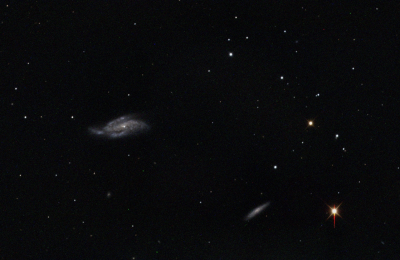
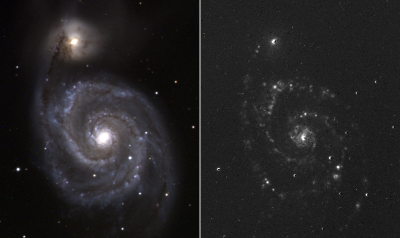
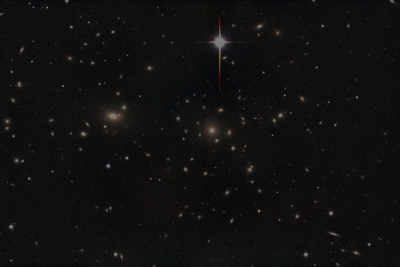
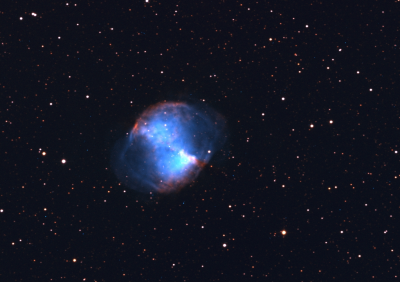
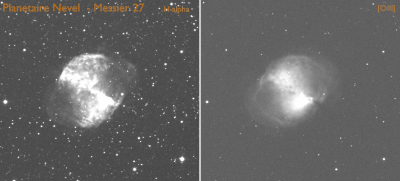
Laatst gewijzigd:15 oktober 2024 13:11
View this page in: English
Met de Gratama Telescoop zijn al een aantal mooie opnames gemaakt. De voorbeelden hieronder geven een indruk van de mogelijkheden.
![De linker opname toont de verhouding tussen de helderheid van de H-alpha en de H-beta emissielijnen; licht-geel is een hoge intensitiet, donker-blauw is een lage intensiteit. Deze verhouding is een maat voor de hoeveelheid stof tussen de waarnemer en het oplichtende waterstofgas in de nevel. Het rechter plaatje geeft de verhouding weer tussen de helderheden van de [OIII] en de H-beta emissielijnen en is een maat voor de ionisatiegraad van het gas.](/research/kapteyn/sterrenwacht/resultaten-items/m42_2ratios-thumb.jpg)
![Hier hebben we een opname van de Adelaarsnevel, een stervormingsgebied in de Melkweg. De 'valse kleuren' laten zien hoe het waterstofgas, zuurstofgas, zwavelgas en het stof verdeeld zijn. Een groepje pas gevormde heldere sterren staat rechts boven het centrum en deze sterren laten het gas oplichten. Er is 2x30 minuten belicht door het [OIII] filter (blaauw), 1x30 minuten door het H-alpha filter (groen) en 2x30 minuten door het [SII] filter (rood).](/research/kapteyn/sterrenwacht/resultaten-items/messier16_rgb-thumb.png)




